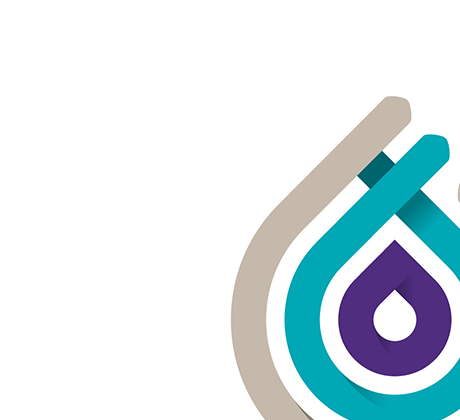-
Audit of stand-alone annual accounts
At Grant Thornton Luxembourg, our team of experts is specialised in audits of stand-alone annual accounts.
-
Audit of consolidated annual accounts
Grant Thornton Luxembourg team of experts is specialised in providing audit services to a lot of multinational which have their administrative center located in Luxembourg for whom the consolidated annual accounts have to be audited.
-
Agreed-Upon Procedures Engagements
In the case of agreed-upon procedures engagement, Grant Thornton Luxembourg performs procedures particularly requested by the client/bank and reports on the findings.
-
GDPR-CARPA Certification
Grant Thornton Audit and Assurance is accredited by the Commission Nationale pour la Protection des Données (CNPD) to provide GDPR-CARPA certifications for organisations.
-
Forensic Audit
Grant Thornton Luxembourg has the forensic and business skills to deal with the most complex situations. A multi-disciplinary team of dedicated accountants in consultation with lawyers, IT consultants, insurance experts, valuation specialists and actuaries may be engaged when necessary.
-
Supervisory Auditor (Commissaire)
Grant Thornton Luxembourg has a dedicated team of experts committed to deliver services to reserved to Supervisory Auditor or "Commissaire aux Comptes".
-
Liquidation Audit
Grant Thornton Luxembourg has a dedicated team of experts committed to deliver services to reserved to liquidation audit "Commissariat à la liquidation".
-
Assurance Engagements
Grant Thornton Luxembourg have a dedicated team of experts committed to work on audit and assurance special engagements.
-
IFRS Services
At Grant Thornton Luxembourg, our experts can help you navigate the complexity of International Financial Reporting Standards (IFRS).
-
Valuation
Grant Thornton Luxembourg helps clients evaluate and implement various strategic alternatives through our comprehensive suite of corporate value consulting services. From opinions, board solutions and services, to valuation and modeling, we can assist you with value added services throughout the transaction lifecycle.
-
Business Risk Services
Mitigate risk and achieve compliance with solutions that address your unique challenges. From governance frameworks to risk assessments, we provide practical strategies to safeguard your business.
-
Consulting
Grant Thornton’s Consulting team is your trusted partner in transformation. We help you turn challenges into opportunities and lead your business confidently into the future.
-
Data Protection and Privacy
Protect your business and ensure regulatory compliance with tailored data privacy frameworks. We help you manage risks, meet GDPR requirements, and secure sensitive information.
-
Deal Advisory
Whether you’re navigating a merger, raising capital, or preparing for restructuring, Grant Thornton’s Deal Advisory team provides expert guidance to help you make informed decisions and achieve your goals.
-
Financial Accounting and Advisory Services (FAAS)
We bring practical solutions that facilitate your daily work, allowing you to focus on your business growth while ensuring compliance and efficiency in all financial matters. Let us guide you through the intricacies of financial accounting and advisory to set your business up for success.
-
Forensic Accounting
We provide customised forensic accounting solutions to help you uncover key facts, resolve disputes, and mitigate risks in multi-jurisdictional and complex environments.
-
Governance, Risk & Compliance
Navigate complex regulations and governance challenges with ease. We help you design and implement effective GRC frameworks that align with your strategic goals and meet regulatory requirements.
-
Sustainability & ESG Services
We empower organisations to define and achieve their environmental, social, and governance (ESG) goals with actionable strategies. Our comprehensive advisory services help you ensure compliance, improve performance, and build trust with stakeholders.
-
Whistleblowing Services
Create a culture of transparency and accountability. We assist in implementing robust whistleblowing frameworks, ensuring compliance with legal requirements and building trust within your organisation.
-
Alternative Investment Services
Grant Thornton Luxembourg is a bespoke business partner to established Alternative Investment Fund (“AIF”) Managers (“AIFM”) as well as independent Managers launching start-up Funds and seeking for a single entry point in Luxembourg in order to set-up and manage their Luxembourg domiciled Funds.
-
Fund Administration
Fund Administration - Grant Thornton Luxembourg offers a full range of tailored solutions to our clients.
-
Registrar & Transfer Agency Services, Client Reporting
Grant Thornton Luxembourg provides investors with confirmations, final Contract Notes and regular statements upon finalisation of the Fund’s Net Asset Value, We handle all wire payments and transfers, including the processing of distribution dividend payments, and perform in-depth Anti-Money Laundering Counter Terrorism Financing and Know-Your Client due diligence checks on investors.
-
Fund set-up, Launch & Corporate life
High-quality product structuring and legal services have become a crucial tool enabling industry players to get through the major changes impacting their business development, strategy and organisation as a whole. Our Investment Management practice at Grant Thornton Luxembourg is your one-stop place for expert advice combining pragmatism and a unique in-depth knowledge of the Luxembourg market.
-
AML Compliance Services
Grant Thornton Luxembourg helps its Clients to keep compliant with AML-CTF laws and regulations and provide an expert skilled team.
-
Regulatory Reporting Delivery
Grant Thornton Luxembourg has set up a Business Process Outsourcing Solution that manages and mutualises regulatory expertise, reporting solutions and skilled human resources
-
Legal Support & Corporate Services
Grant Thornton Luxembourg delivers Legal Support & Corporate services.
-
Accounting & Reporting Services
Grant Thornton Luxembourg may explore the specific characteristics of your company in order to provide a personalised assistance in the fields of Accounting & Reporting services.
-
Corporate Tax Compliance
Grant Thornton Luxembourg may explore the specific characteristics of your company in order to provide a personalised assistance in the fields of corporate tax compliance.
-
Corporate Finance
Exploring the strategic options available to you as a business or shareholder, advising and project managing the chosen solution, Grant Thornton Luxembourg provide a truly integrated corporate finance offering.
-
Corporate Secretarial Services
Grant Thornton Luxembourg provides corporate secretarial services to enable our clients to comply with their legal and administrative obligations in Luxembourg.
-
Cross-Border Tax
Tax policies are constantly evolving and there are a number of complex changes on the horizon that could significantly affect your business. We can help you with practical advice such as VAT and direct tax.
-
Direct Corporate Tax Advice
Grant Thornton Luxembourg understand the complexity of national and international tax laws. We can unlock your potential for local and international growth.
-
Expatriate Tax
Although international employment has become a standard practice in business life, employers and their assignees are still faced with numerous questions in this area. Grant Thornton Luxembourg can help you to be one step ahead.
-
HR Consulting
Entrust our experts with the outsourcing of your human resources to enable you to organise with complete serenity. You will save valuable time, boost your profitability and be able to concentrate on your core business!
-
Liquidation & Insolvency
Grant Thornton Luxembourg can draw on years of experience in the areas of liquidation and insolvency and then make sensible recommendations on how best to deal with your financial crisis.
-
Payroll
A team of highly qualified collaborators manages around 7,000 payslips per month and currently offers related consulting services to more than 500 clients. Our mission is to set up useful processes for the employer over the long term.
-
Personal Tax
Our experienced multilingual Personal Tax Team is keen to give you tailored solutions, optimise your situation and help you make decisions. We could assist you with: income tax returns, vat returns, tax assessments, contacts with the tax authorities and assistance by tax audit or tax litigation, tax matters advices, inheritance tax matters, international assignments and trainings.
-
Transaction & Reorganisation
Reorganisations - Transaction Planning - Tax Structuring - M&A. Companies strive to improve their market position with take-overs, mergers and demergers. Strategy and financial tactics are important elements in this respect. Grant Thornton tax specialists may intervene in all stages of the transaction.
-
Set-up, Restructuring & Business Planning
Grant Thornton Luxembourg is delighted to add value during the implementation of your businesses and to be given the opportunity to grow together with you. Relying on our professionals’ financial expertise will allow you to take dynamic but sustainable decisions.
-
Tax - Financial Services & Operational Tax
Our Tax - Financial Services team provides tax advisory services relevant for the Financial Services Industries and Operational Tax assistance. This includes tax advice, automatic exchange of information (FATCA, CRS, DAC 6, DAC 7 and DAC 8), advisory and compliance assistance regarding the US Qualified Intermediary (QI) regime, assistance regarding withholding tax reclaims, investor tax reporting and tax structuring in the context of Islamic finance.
-
Transfer Pricing
The laws surrounding transfer pricing are becoming ever more complex, as tax affairs of multinational companies are facing scrutiny from media, regulators and the public. Grant Thornton Luxembourg can help you manage your transfer pricing risks and find opportunities.
-
VAT and Other Indirect Tax Advice
Our VAT advisory business line is dedicated to keeping you up to date with amended VAT legislation and changes in the administrative practice in Luxembourg and worldwide with our Grant Thornton global VAT network. Specialists review and comment on new EU directives and the latest case law by the Court of Justice of the European Union in order to provide you with advice tailored to your specific needs.
-
VAT and Other Indirect Tax Compliance
Handling the day-to-day VAT compliance obligations requires being close to your business. Our VAT compliance business line assists you to ensure that long term reporting processes are implemented and respected with the aim of safeguarding a proper and timely VAT filing. This is important for achieving a VAT compliant environment and mitigating local VAT risks.
-
Information Security
Is your organisation resilient to information security threats? Whether you're a large enterprise or a small business, Grant Thornton is committed to providing comprehensive security services tailored to your needs.
-
IT Audit
Grant Thornton internal audit team provides IT audit services as part of your internal audit or as part of any specific IT audit that is required (ad’hoc , assurance reports, external audits).
-
MySmartOffice
Grant Thornton Luxembourg offers a new complete online accounting and consulting solution for SMEs named MySmartOffice to access financial and operational information instantly online.
The economic consequences of the Coronavirus disease 2019 (COVID-19) on future trading assumptions, and the direct impact on many companies, may place some companies under liquidity pressures. We understand these pressures and have compiled some tips for managing cash flow and mitigating any potential impact on your debt obligations.
1. Change your approach to cash flow forecasting
Companies that have not faced a liquidity crunch before can find it quite demanding to change their cash flow management. However, by moving to a receipts and payments basis, conducting daily forecasting and integrating short- and medium-term forecasts, you can likely increase headroom to implement other actions and build confidence with shareholders and lenders.
2. Conduct stress tests
By stress testing your forecasts for different impact scenarios, you can gain better clarity on the sufficiency of your liquidity. This can help you inform an appropriate response to your financial stakeholders, who may be asking you to implement a variety of new measures.
3. Make sure you’re still in compliance
Check to ensure that you’re still compliant with the terms of your debt obligations, including the representations you may have to make on any drawdowns.
4. Be proactive in speaking to your lenders
The more notice you can give your debt provider of the impact of COVID-19 on liquidity, the greater chance there is of getting the flexibility you may need.
5. Prioritise existing stakeholders
While new money could be raised from third parties, it will potentially be both expensive and difficult. Most often, your business’s existing shareholders and lenders should be your priority.
6. Model your working capital
Certain types of debt facilities are more-quickly impacted by downturns in trading. This is especially so for asset-based facilities where available funding is driven by debtor and stock levels. This makes it essential to carefully model the impact of trading on your headroom levels.
7. Review temporary finance options
Other sources of temporary financing might be possible—and these are changing every day. To get access to the latest information, it’s always a good idea to speak to a specialist.
Please contact your Client team within Grant Thornton Luxembourg in case you need support! Our core task force is operational and will respond to any request within 24 hours.
We are also available to support you for any other administrative procedures in connection with COVID-19.


